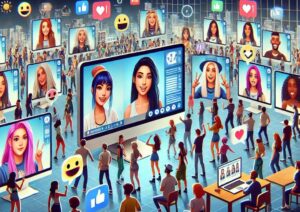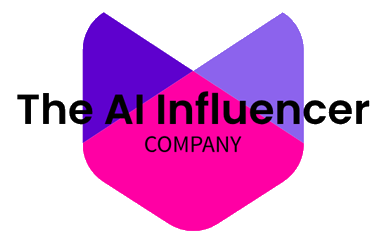Influencer marketing has become an essential part of any brand’s promotional strategy. By partnering with influencers who have strong connections with specific audiences, brands can increase awareness, improve credibility, and drive conversions.
However, manually discovering and vetting relevant influencers can be extremely time-consuming. This is where artificial intelligence (AI) comes in – revolutionizing influencer marketing through automation, optimization, and data-driven insights.
AI is transforming everything from influencer discovery to campaign management and performance tracking. Machine learning algorithms help identify and evaluate potential influencer partners at scale by analyzing factors like audience demographics, content resonance, and engagement rates.
Campaigns featuring customized, AI-generated content consistently outperform generic posts, leading to higher ROI. Predictive analytics empower brands to forecast results and double down on what’s working.
While AI unlocks incredible new possibilities, it also introduces challenges around ethics, transparency, and maintaining a human touch. Responsible use of AI will be critical as brands aim to balance data-driven personalization with creativity and authentic relationship building. By combining human strengths with the efficiencies of AI, the future of influencer marketing will reach new heights.
How AI is Automating Influencer Discovery and Vetting
In the past, identifying and evaluating potential influencer partners was an extremely tedious process. Marketers would spend hours manually combing through social media profiles, hoping to discover creators that matched their brand and campaign goals.
The rise of AI has completely transformed influencer discovery and vetting by automating the process at scale. Brands now leverage:
- Algorithms that rapidly surface lists of relevant influencers based on analyzing massive datasets.
- Automated scoring of influencers using factors like followers, engagement, topics, audience interests.
- Access to databases of pre-vetted influencers tailored to specific brand criteria.
Rather than vetting a handful of influencers manually, AI identifies and evaluates thousands of relevant prospects in a fraction of the time. This allows brands to quickly scale targeted partnership outreach.
The efficiency gains from AI are immense compared to previous manual processes. Influencer discovery is now effortless and optimized.
Optimizing Campaigns Through Performance Analytics
In the past, influencer campaign management involved considerable guesswork regarding ideal partnership structures, posting cadences, budget allocations, and measuring content resonance. With AI, rich performance data and process automation enable:
- Strategic pre-campaign modeling based on historical benchmarks and success factors to guide partnership combinations across nano, micro and macro influencers.
- Optimized content posting schedules tailored to each influencer’s audience traffic patterns by region, day of week, and time of day for maximizing exposure.
- Real-time centralized dashboards tracking clicks, engagements, conversions, sentiment and other KPIs to instantly improve underperforming creative elements, targeting parameters or platforms.
- Streamlined collaboration via chatbot assistants handling messaging, contracts, asset sharing, approvals, payments and more to increase productivity.
- Ongoing compliance monitoring and sentiment analysis to ensure influencer content aligns with brand guidelines.
Rather than guesses, AI-powered performance data provides actionable insights to systematically refine elements of the influencer campaign optimization process.
Dynamic Ad Creation with Generative AI
Previously limited to generic static posts, AI now empowers ongoing personalized and dynamic ad creation through:
- Generative algorithms like GANs and VAEs produce endless tailored visual and copy combinations optimized for each campaign.
- Proprietary AI models trained on brand assets, guidelines, and target audience data to ensure dynamically generated content remains on message.
- Multivariate testing of creative elements like imagery, captions, calls-to-action, and products for iterative optimization based on performance.
- Seamlessly tailored outputs personalized to resonate with each targeted customer segment and campaign goals.
Going beyond human scalability constraints, AI enables the data-backed creation of hyper-targeted ads at scale.
Predictive Analytics for Data-Driven Decision Making
Previously, determining potential ROI from influencer investments relied largely on intuition. Now, AI unlocks statistically robust predictive analytics capabilities including:
- Accurate forecasting of expected engagement, conversions, and revenue across proposed influencer partnerships based on historical benchmarks.
- Optimized budget allocation focused on high-potential collaborations predicted to drive maximum ROI.
- Attribution modeling quantifies the level of sales and traffic driven by each influencer.
- Continuous optimization as algorithms ingest new performance data, audience insights, and external market trends to improve forecasts.
Rather than guesses, AI provides reliable quantitative guidance on where to invest influencer marketing budgets for economically optimal returns.
Public Perception of Virtual Influencers
Virtual influencers are a new phenomenon, so how does the general public view these CGI personas on social media? Recent surveys shed some light.
- 58% of respondents already follow at least one virtual influencer. But 24% still don’t know virtual influencers exist.
- Their interesting, inspiring content and storytelling appeal most to followers currently.
- Gen X finds virtual influencers more relatable and trusting than Millennials or Baby Boomers, challenging assumptions.
- Only 35% have purchased something from a virtual influencer so far.
This data shows increasing public receptivity to virtual influencers over time. As audience awareness and purchasing continue to rise, virtual influencers represent significant marketing potential. Brands should track perception shifts as this channel evolves.
Balancing Data with Qualitative Human Judgment
While promising, AI has limitations including potential biases, transparency issues, dehumanizing over-automation, and data quality challenges. The key is thoughtfully combining AI efficiency with human creativity, ethics and qualitative judgment.
Together, they achieve impact beyond what either can deliver independently. Brands must ensure responsible AI governance and oversight.
The Future with AI-Powered Influencer Marketing
As we have explored, artificial intelligence is rapidly transforming every facet of influencer marketing. Automation, optimization algorithms, generative content creation, predictive analytics – AI propels influencer collaborations to new heights.
However, risks around data ethics, transparent AI practices, and maintaining human creativity remain. Striking the right balance will separate responsible AI adopters from irresponsible ones.
Moving forward, the most successful brands will be those who strategically apply AI to amplify proven human skills – not replace them. The future is not about AI versus humans, but rather AI complementing humans.
With this mindset and responsible governance, brands can leverage exponential efficiency gains from AI while retaining the qualitative human touch.
Influencer marketing supercharged by data science promises more relevance, engagement, and ROI than ever thought possible. The future potential is astounding.
Brands investing early in ethically integrating AI with creativity will gain a sustained competitive advantage as influencer marketing evolves. The time to start is now.
Talk to us at AI Influencer Company if you want more details.




